Ricoh G600 Review
Ricoh G600
If you need a camera that can survive water, dust, cold and shocks then Ricoh has just the thing.
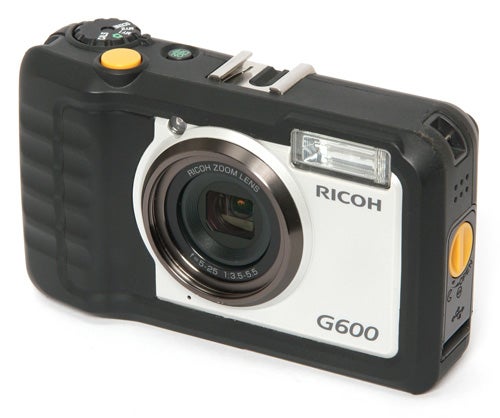
Verdict
Key Specifications
- Review Price: £300.00
Outdoor leisure pursuits such as hiking, climbing, canoeing or skiing are great fun and healthy exercise, but present a big problem for photographers. Most such activities involve exposure to water, cold temperatures and the risk of occasional bumps and shocks, any of which can easily ruin most cameras. If you need a camera that can survive your active lifestyle then your choices are limited. There are several models in the Olympus mju SW range, including the mju 850 SW (£149), and Pentax makes the excellent Optio W60 (£184), but while both of them boast excellent waterproof, cold-proof and in the case of the mju SW shockproof credentials, they both look slightly fragile when compared to the armoured behemoth that is the Ricoh G600, which looks like it could be used to smash them both to bits and then take photos of the remains.
Under the armour, the G600 is a 10-megapixel camera featuring a 5x zoom internal lens with a wide-angle end equivalent to 28mm, a 2.7-in 230k LCD monitor and digital image stabilisation, a similar specification to both the Pentax W60 and the Olympus mju 1030 SW (£213). However the G600 also features a super-powerful built-in flash with a range of 10m, as well as an external flash hot-shoe. It’s an impressive looking camera, but it is expensive. The G600 is currently selling for around £300.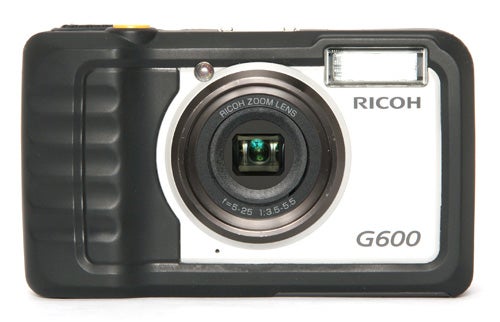
Ricoh’s website makes much of the various international and military standards to which the G600 has been built, but the upshot is that it is designed to be waterproof to a depth of 1m, survive falls of 1.5 metres, and operate at temperatures down to minus 10 centigrade. In fact both the Pentax W60 and all of the recent Olympus mju SW models make greater claims for shooting depth, at 4m and 10m respectively, but in any case the actual survivable depth would depend on many factors, so it’s all a bit hypothetical anyway.
Where the G600 scores over its rivals is in its robust and practical design. The Olympus and Pentax models are also designed to look as stylish as conventional ultra-compacts, and as a result they are quite small and slim with small fiddly controls. The G600 on the other hand is large, heavy and uncompromisingly rugged. It measures 116.5 x 68 x 32 mm, and weighs 260g excluding battery and card. The camera body is armoured with resilient rubber, the hatches have rubber o-ring seals and locking catches, and the controls are large enough to operate while wearing gloves, something that neither of its main rivals can claim.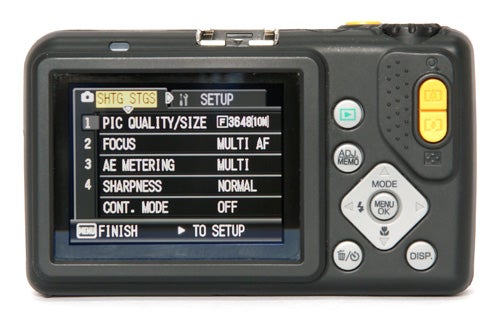
Although it is now being marketed as an outdoor sports camera, in fact like its predecessor the Caplio 500G, the Ricoh G600 was originally designed as an industrial camera for use on building sites, and also for use by the emergency services. It even has an anti-tampering Edit Detection mode so that it can be used by the police for evidence-quality forensic photography. On the main dial is a shooting mode called CALS. I have no idea what the acronym stands for and the manual doesn’t say, but apparently pictures shot in this mode comply with some Japanese standard for public works reports, which is sure to come in handy. The Scene mode is also a bit unusual; it only has six settings, one of which is the camera’s video mode, but the highlight is the Firefighting mode, which is succinctly described as “For shooting the scene of a fire.” How cool is that?
Despite its tough exterior, the G600 is quite a simple camera at heart. It has only auto exposure modes, but does at least have a range of metering and AF zone options. Like all Ricoh compacts the G600 also has a nice user-customisable Adjust Function menu, which can be used for quick adjustments to up to four menu options, with the defaults set to exposure compensation, white balance and ISO. Particular set-ups can also be saved as two custom user modes and selected from the main mode dial.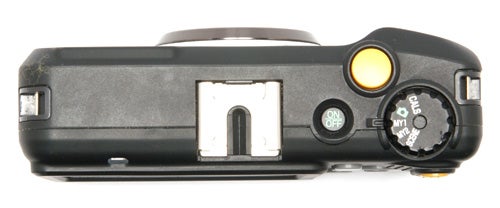
One of the G600’s selling points is its massive 10m flash range. While it does indeed have an extremely powerful built-in flash, that 10m range is a bit of a cheat, since it’s only available in a special flash mode that increases the camera’s ISO setting to 1600 and fires the flash at full power. The results are impressive, easily lighting up the entire street with a shot from my front garden, but the pictures are quite noisy and anything closer than a few metres is very over-exposed. The Auto mode is more civilised, metering the flash for closer-range subjects, with a maximum range of about 5m which is still pretty impressive.
One unusual feature, although common to other Ricoh compacts, is the ability to use two AAA (the little ones) as an emergency backup power supply, thanks to a hinged baffle inside the battery compartment. A pair of alkaline AAA batteries will provide enough power for approximately 60 shots.
The G600’s overall performance is a bit hit-or-miss. It starts up in just over two seconds, and shuts down again even more quickly, but in single-shot mode its shot-to-shot time is over four seconds, which is pretty slow. In continuous mode it starts off well, shooting the first six frames at approximately one frame a second, but then it slows down a lot once the buffer fills up, dropping to about 0.5fps, but it doesn’t focus between shots in this mode.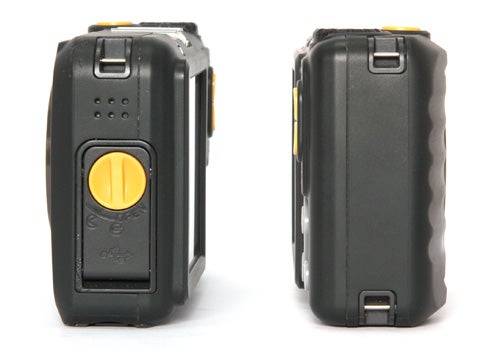
The autofocus system is the same as used in the R8 and R10, a nice multi-zone system that is impressively fast in good light, although it does slow down a lot in lower light levels. In very low light it has some problems, but will usually focus on the second or third try. The camera has a bright AF assist lamp for very dark conditions, with a range of around four metres.
In terms of picture quality, the G600 is unfortunately slightly disappointing, and somewhat below average for a 10MP compact camera. The internal zoom lens produces quite pronounced barrel distortion at wide angle, and while centre sharpness is very good there is quite a lot of blurring and chromatic aberration in the corners of the frame. Colour reproduction is very good, but dynamic range is distinctly limited with blown highlights and murky shadows on high-contrast shots. The biggest problem is image noise, which is visible even at the lowest ISO setting, and get progressively worse as sensitivity is increased, although colour fidelity remains good up to 800 ISO.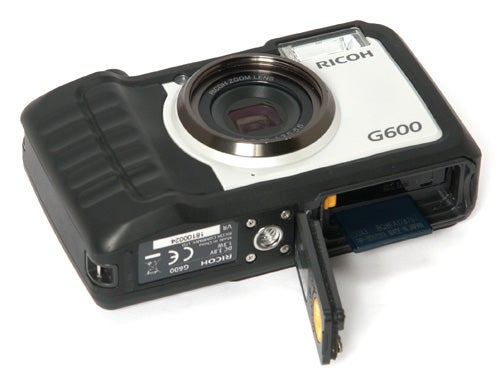
”’Verdict”’
The Ricoh G600 is very expensive compared to other rugged compacts, and lacks the social graces of its main competitors. It has a number of unique features that will be useful for specialist applications such as law enforcement, emergency response or the construction industry, but as an outdoor sports camera even with its robust armour-plated design it is outclassed by cheaper rivals. It is also let down by so-so image quality and slow performance.
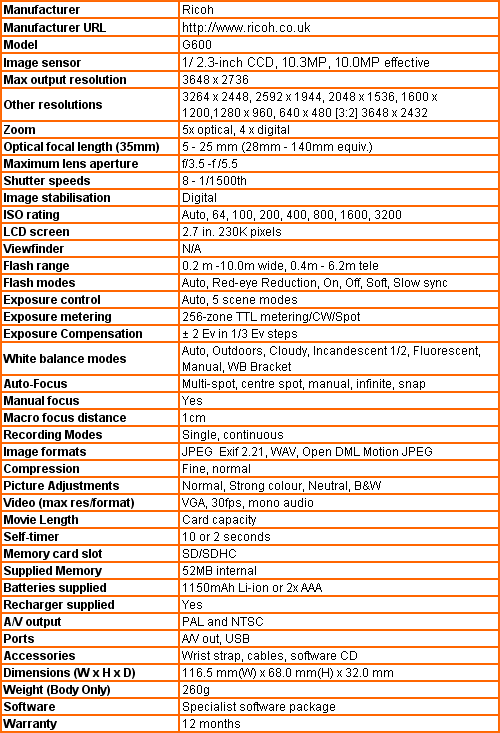
”Over the next few pages we show a range of test shots. On this page the full size image at the minimum and maximum ISO settings have been reduced to let you see the full image, and a series of full resolution crops have taken from original images at a range of ISO settings to show the overall image quality. These ISO test images are shot indoors using reflected natural light for maximum consistency. ”
—-
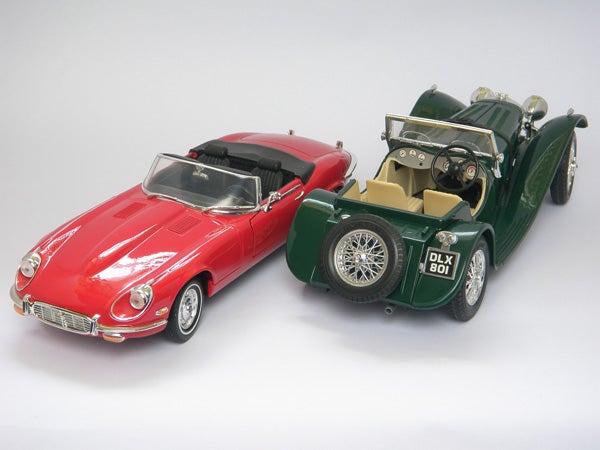
This is the full frame at 64 ISO.
—-
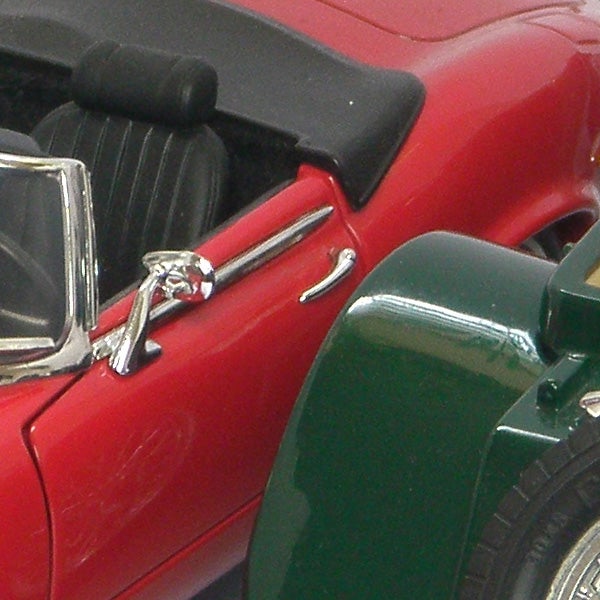
There is some image noise visible even at the minimum ISO setting.
—-
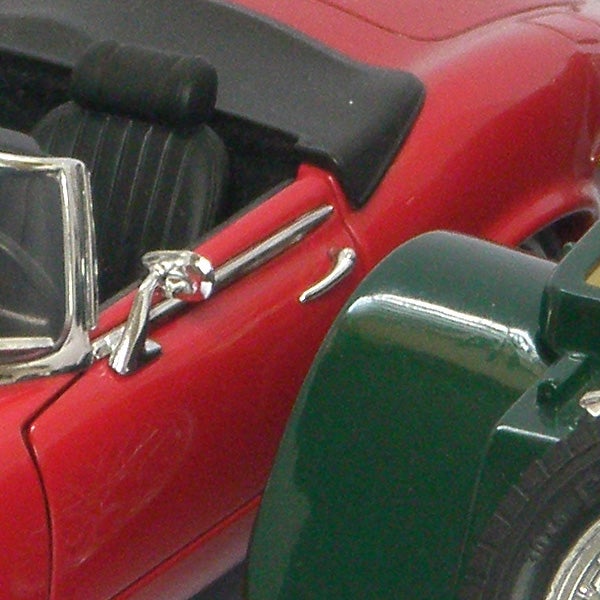
Slightly worse at 100 ISO.
—-
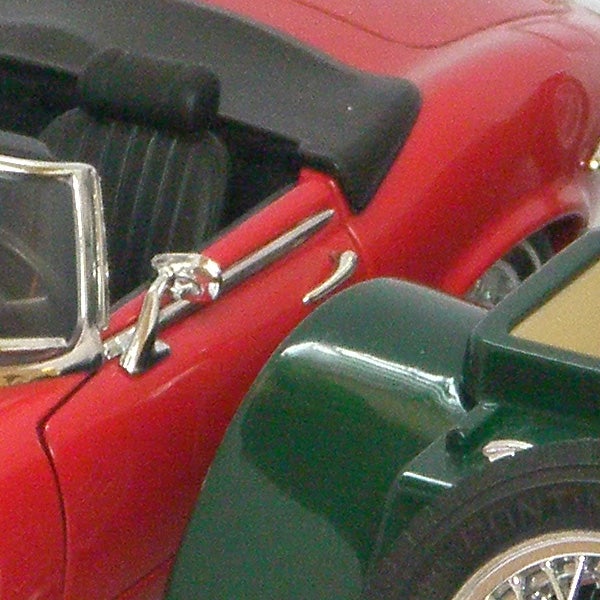
200 ISO is about the same as 100.
—-
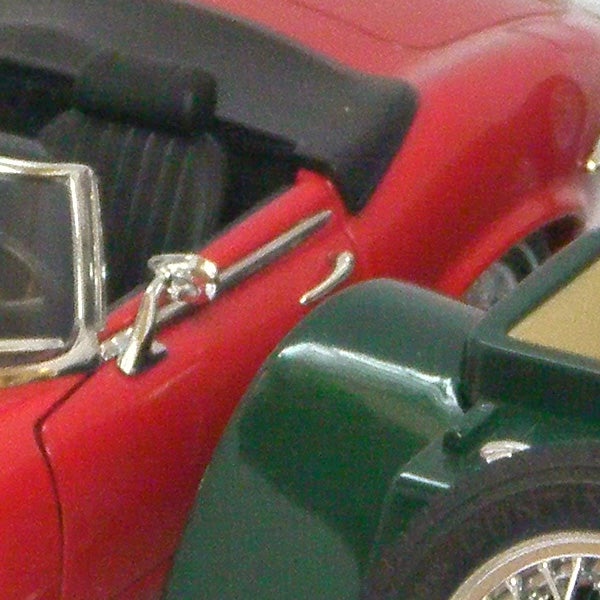
Progressively worse noise at 400 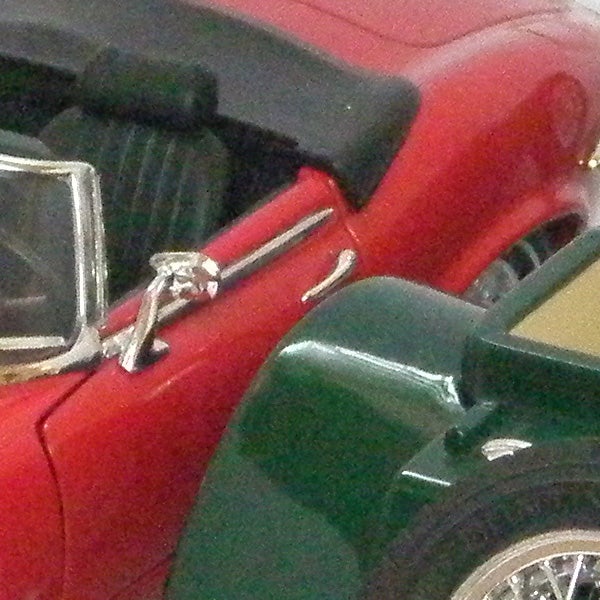 ISO.
ISO.
—-
Noise is very visible at 800 ISO, but at least the colour balance is largely unaffected.
—-
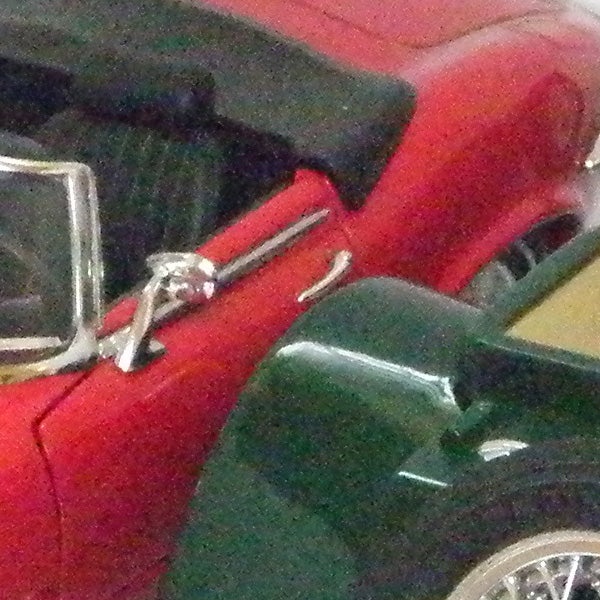
1600 ISO might be OK for small prints if you’re not too fussy.
—-
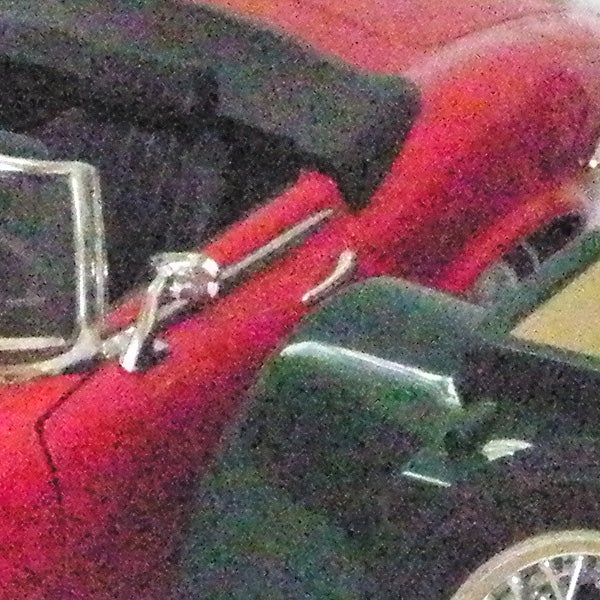
3200 ISO is pretty hazy.
—-
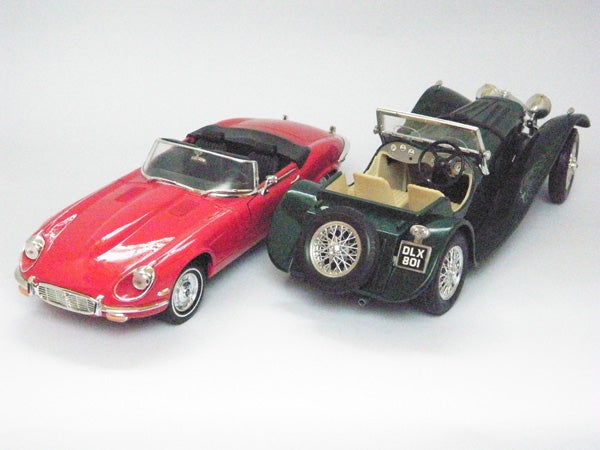
This is the full frame at 3200 ISO.
—-
”A range of general test shots are shown over the next two pages. In some cases, the full size image has been reduced for bandwidth purposes, and a crop taken from the original full resolution image has been placed below it to show the overall image quality. Some other pictures may be clicked to view the original full-size image. ”
—-
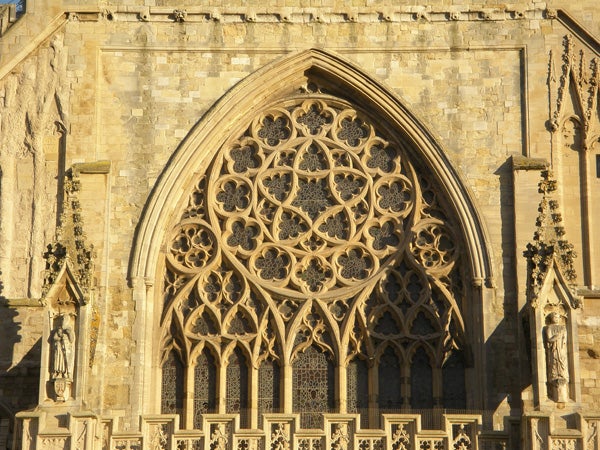
Here’s the usual test shot of the west window of Exeter cathedral to compare detail and sharpness with other cameras. See below for a full-res crop or click to download the full-sized version.
—-
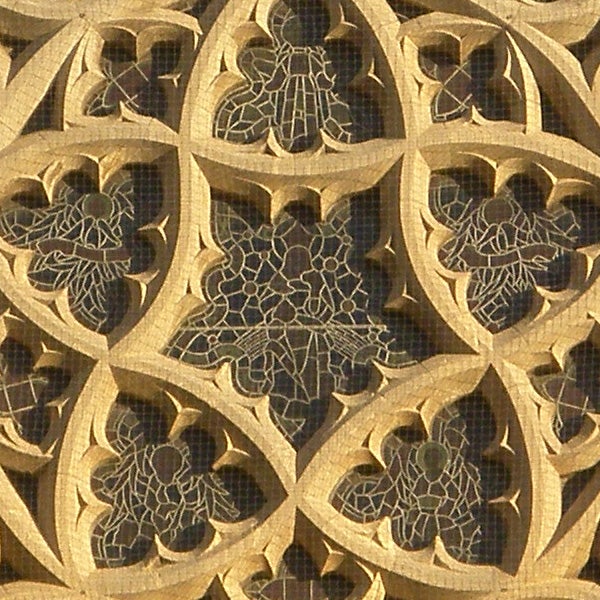
The level of detail is very good, although there is a litte noise visible in this shot.
—-
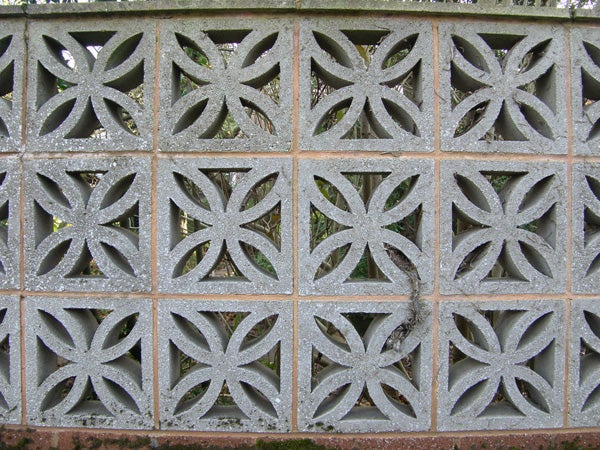
The internal zoom lens produces quite a lot of barrel distortion.
—-
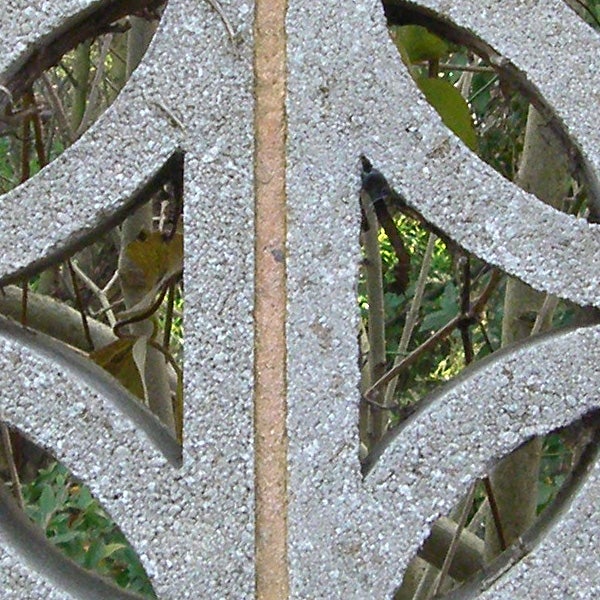
Centre sharpness is pretty good.
—-
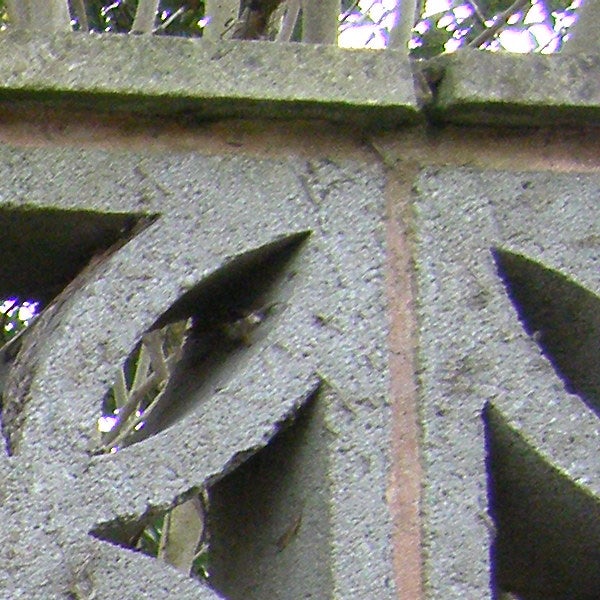
There is some blurring and chromatic aberration in the corners of the frame.
—-
”Here are some general test shots to help evaluate the camera’s overall image quality, including the zoom range of the lens. Some pictures may be clicked to download the full size original image ”
—-
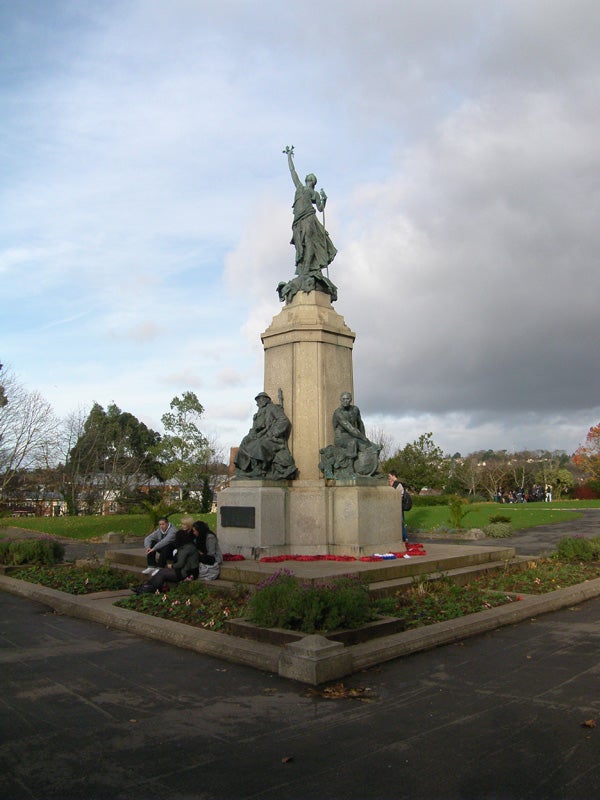
The wide end of the zoom is equivalent to 28mm, useful if you have to photograph a large burning building or something.
—-

The telephoto end is equivalent to 140mm.
—-

Colour reproduction is pretty good, despite the overcast conditions.
—-
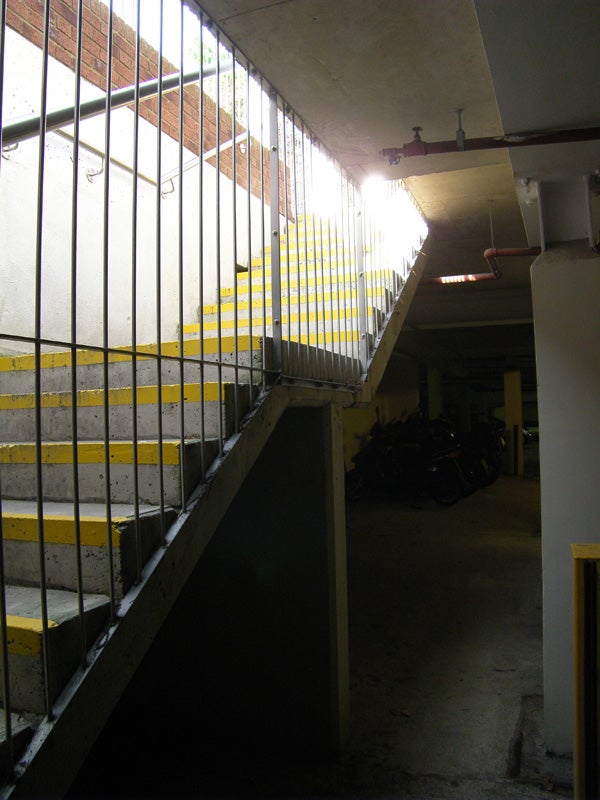
High contrast shots have both blown highlights and murky shadows.
—-
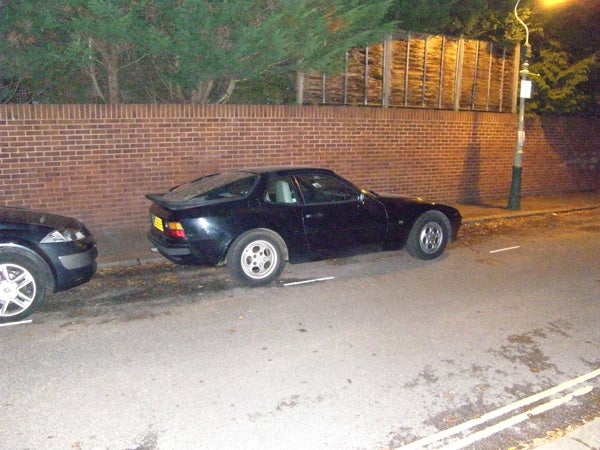
The 10m flash range is pretty bonkers, easily lighting up the whole street.
—-
Trusted Score
Score in detail
-
Value 5
-
Image Quality 7
-
Build Quality 10
Features
| Camera type | Digital Compact |
| Megapixels (Megapixel) | 10 Megapixel |
| Optical Zoom (Times) | 5x |

